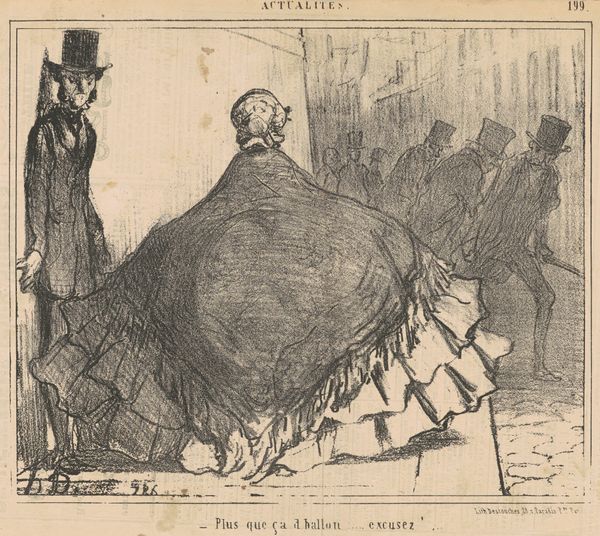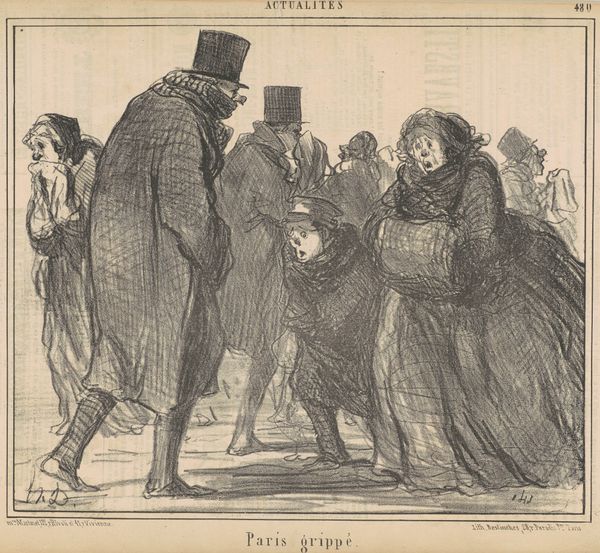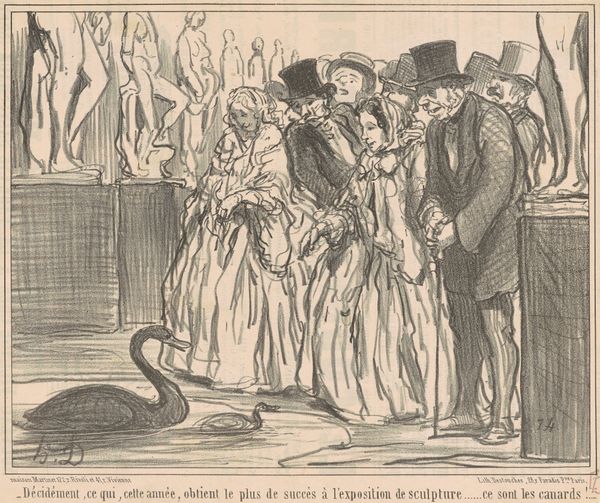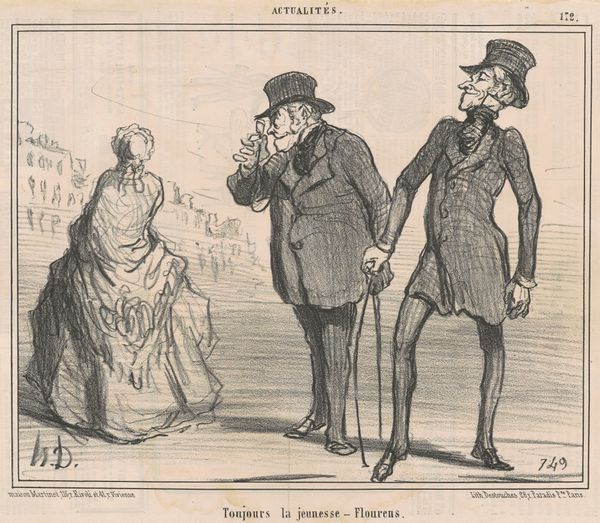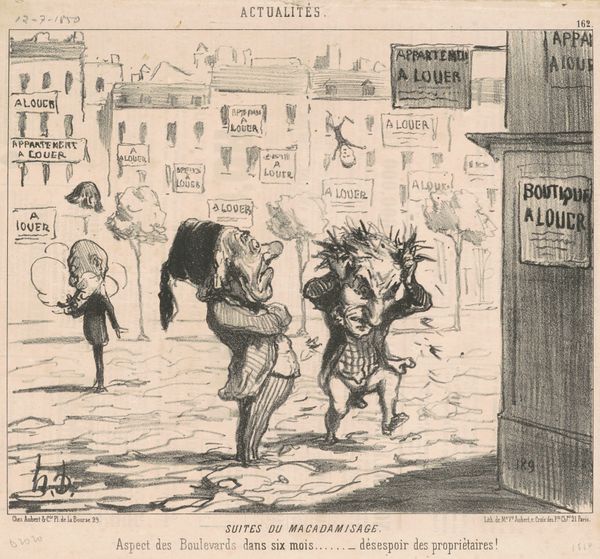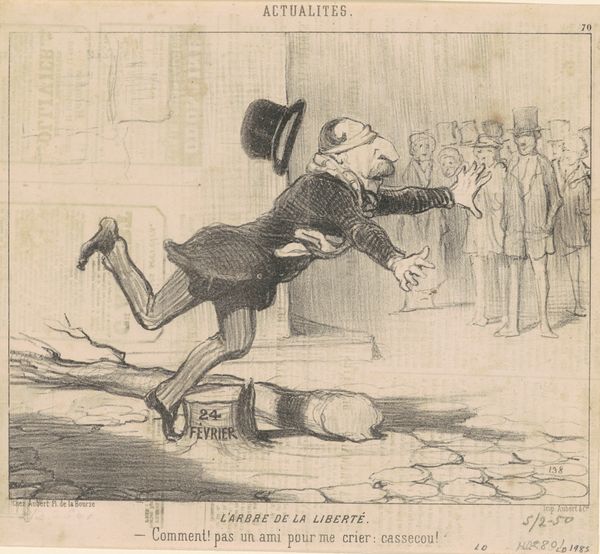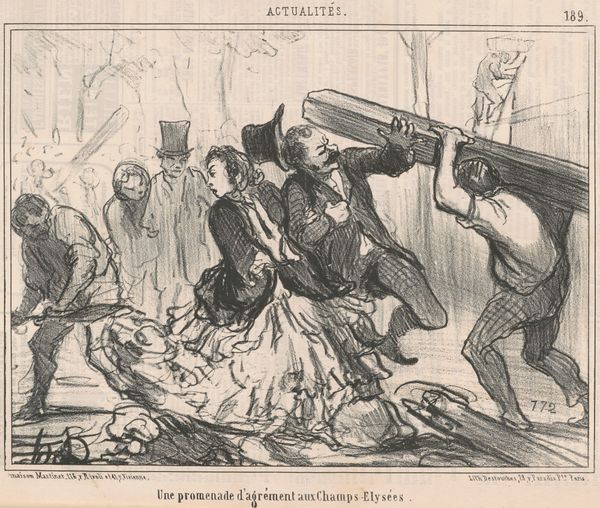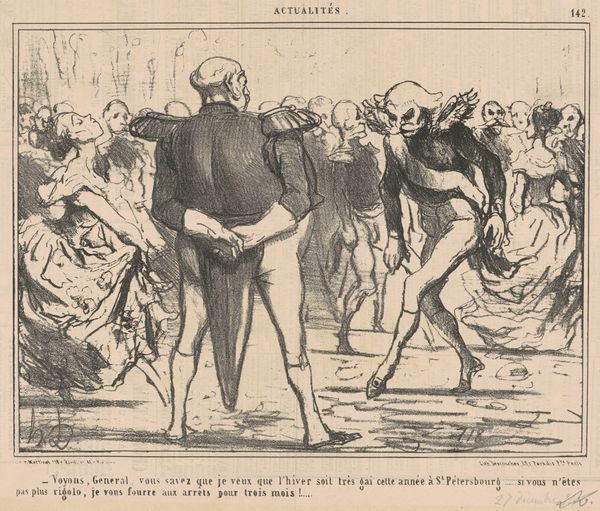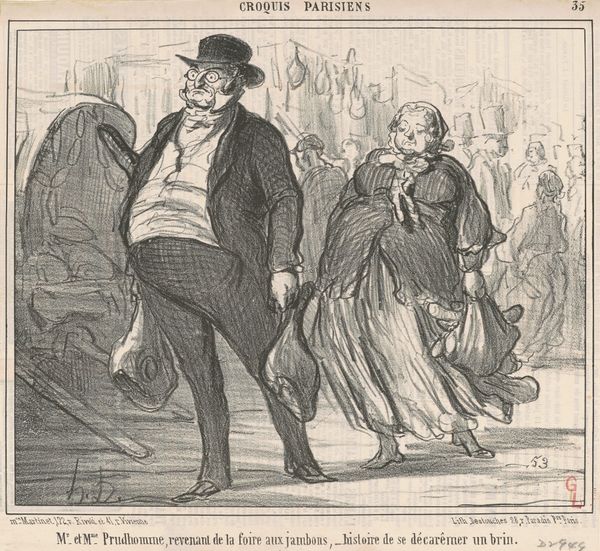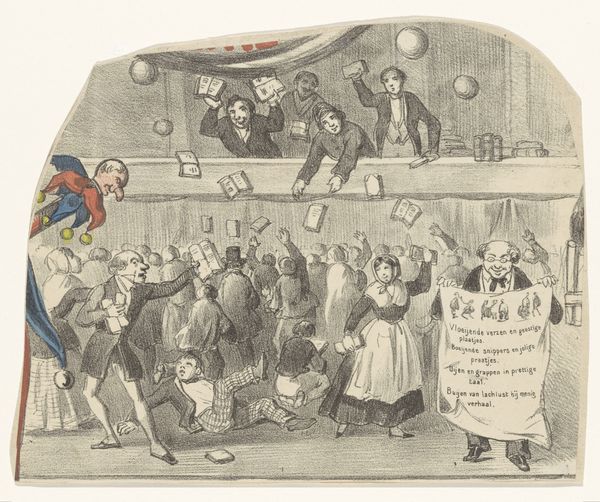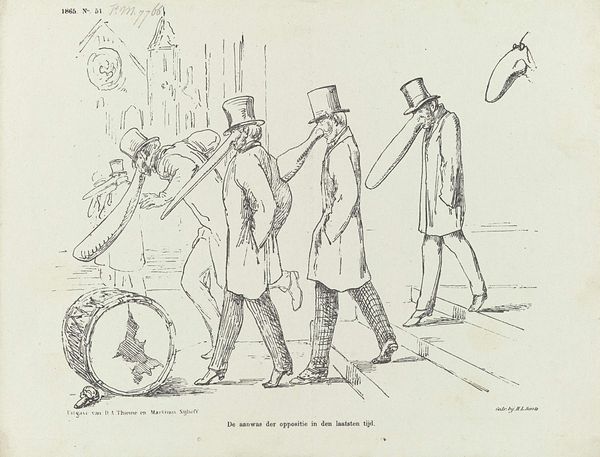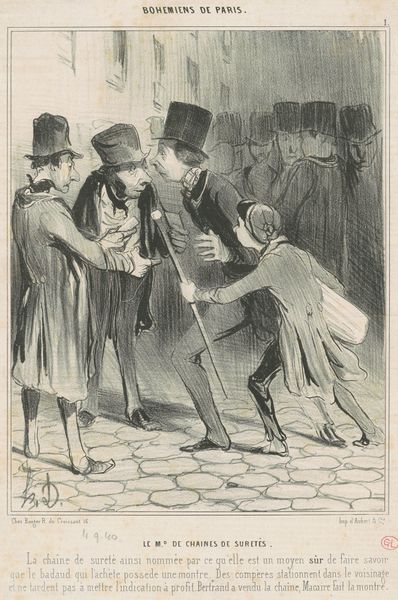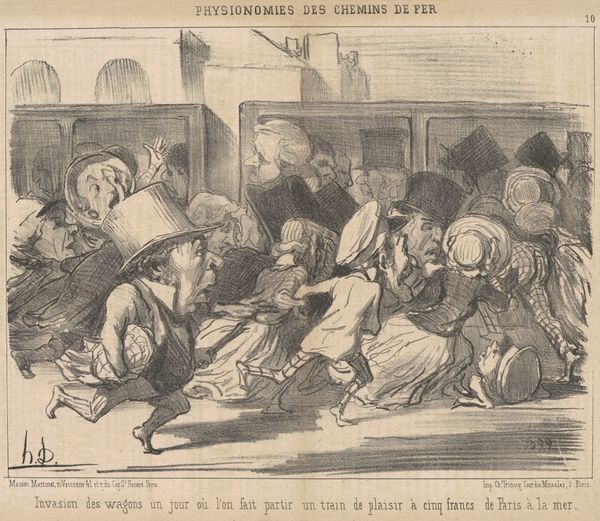
lithograph, print
#
flâneur
#
lithograph
# print
#
caricature
#
romanticism
#
genre-painting
Copyright: National Gallery of Art: CC0 1.0
Curator: This lithograph, entitled "Les Parisiens en vendanges," or "Parisians at the Grape Harvest," comes to us from the hand of Honoré Daumier, sometime in the 19th century. Editor: It strikes me as humorous, almost satirical. The hurried figures, the overflowing basket, it all feels staged. Are they really harvesting, or is this something else? Curator: Daumier was a master of social commentary. Through his prints, he critiqued the foibles of Parisian society. The 'flâneur,' the observer, and caricature are both evident here. The figures, especially the man in the top hat, appear almost comically out of place amongst the grapes. Editor: I notice that, yes, and there’s something performative in the way the man carefully plucks and examines the grapes – almost as if he’s never done anything like this before. The other figures, too – they’re caught mid-motion. Is it about exposing class divisions perhaps? Curator: Undoubtedly. This era saw increased tension between the aristocracy and the rising bourgeoisie. Grape harvesting, historically a peasant activity, becomes almost a charade when undertaken by fashionable Parisians. The romanticized style ironically heightens the satire. Daumier skillfully used these everyday genre scenes to explore those kinds of broader social dynamics. The context is pivotal, of course. Editor: The background looks crowded, like a sea of heads. They’re all part of this… charade? It reinforces the feeling of observation, and adds a voyeuristic layer of looking and being looked at. I suppose that's a constant anxiety with rapid urbanization, who is performing leisure for whom? Curator: Indeed. This lithograph provides more than just a glimpse into a single harvest; it reveals broader questions of labor, leisure, and social identity. And remember this artwork comes out of a larger period where social mobility became accessible, which means that people are constantly moving into different parts of the socio-economic ladder and renegotiating behaviors and cultural references. Editor: Thinking about that social commentary, what is this work inviting us to think about beyond surface level humor? Curator: I'd hope viewers reflect on how class continues to shape leisure, consumption, and social rituals. That intersectional dialogue makes Daumier's observations as valid today as they were nearly two centuries ago. Editor: Agreed. There is always a question of performativity when the lines between the personal and the social spheres start to blur.
Comments
No comments
Be the first to comment and join the conversation on the ultimate creative platform.
